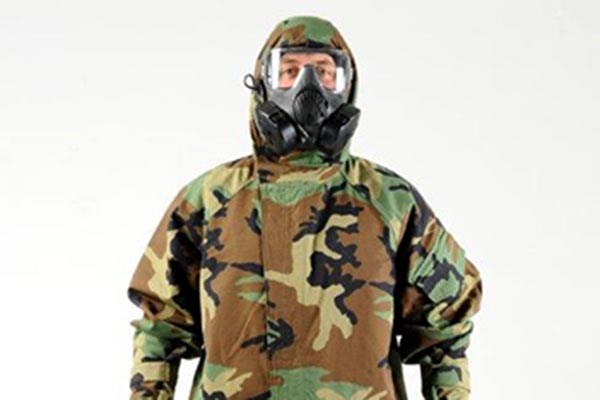
Researchers, at the Natick Soldier Research, Development and Engineering Center, the University of Massachusetts Lowell, and Triton Systems, Inc., are collaborating on the technical development of self-healing technologies that will be used to mend chemical-biological protective clothing.
12/02/2015
Aerotech News
By Jane Benson
Army researcher Quoc Truong wants to fill in the gaps in soldier protective clothing — literally.
Truong is a physical scientist at the U.S. Army Natick Soldier Research, Development and Engineering Center, or NSRDEC. He is collaborating with other researchers at NSRDEC, the University of Massachusetts Lowell, and Triton Systems, Inc., on the technical development of self-healing coatings that contain micro-capsules of healing fluid, which will be used to mend chemical-biological, or CB, protective clothing.
“When Soldiers are wearing a chem-bio protective garment, they are basically isolating themselves from their environment and any harmful agents, such as nerve gases, viruses and bacteria,” Truong said. “Soldiers are very active and can encounter thorny bushes or other things that could result in pin-hole-sized damage to their chem-bio garment while carrying out their missions. The damage may not be visible to the human eye, but it is there.”
The self-healing technologies will enable cuts, tears and punctures in fabrics to quickly repair themselves. This means that the protective qualities of the garments will be far less apt to become compromised by tears and punctures. The technology will be incorporated into both the Joint Service Lightweight Integrated Suit Technology, or JSLIST, garment, and the Joint Protective Aircrew Ensemble, or JPACE, garment.
“The self-healing coatings can be a spray-on coating or a continuous coating – depending on the type of protective clothing they are applied on,” Truong said. “The idea is just like when a scratch breaks open the skin. Our body has the ability to heal and mend, make a scab and heal. The same idea applies to the self-mending fabric; when the fabric containing these self-healing materials gets cut, it comes back together and heals. It forms something very much like a scab on the skin except it is on the fabric.”
The technology combines innovative approaches to gap-closure with healing micro-capsules that are activated when torn to repair cuts and punctures. The self-healing layer contains reactive agents to deactivate dangerous threats, including deadly chemicals, and also acts to reform the physical barrier to bacteria and viruses. When integrated into a CB protective garment, the self-healing technologies help ensure that the CB protection is uninterrupted.
The JPACE’s protective mechanism is based on a selectively permeable membrane; therefore, the microcapsules are embedded into the selectively permeable membrane and/or in a supporting reactive selectively permeable membrane layer, which will act as a self-healing supporting barrier material. When the membrane breaks, these microcapsules open and mend the tear in about 60 seconds, filling the gap with the aid of the gap-closure technology.
“This helps preserve the capabilities of the fabric,” Truong said. “The idea is to support chemical-biological protective clothing. The self-healing textile would have the ability to neutralize the chemical agents. The selectively permeable membrane structure acts like a barrier to agents, but allows warm/hot body sweat, i.e., moisture vapor, to be transported from the body to the environment outside of the protective clothing.”
The JSLIST chemical protective over-garment is based on a non-woven material that carries activated carbon spheres. Thus, it is air permeable and doesn’t lend easily to the use of microcapsules. So, the JSLIST suit configuration has to be sprayed with microcapsules and a foaming agent.
Truong is dedicated to continuously improving safety for the Soldier.
“Ideas to help the soldier come to me all the time,” Truong said. “It makes me feel good to know that some of these ideas can be transformed into protection for the Soldier.”
The technology also has commercial applications.
“For instance, this technology could be used to develop self-mending tents to ensure protection against the elements since holes would be repaired quickly,” Truong said. “It could also be used for commercial workers who handle chemicals, work in the rain, or work in extreme cold. Their protective clothing would be self-mending to keep them safe, dry and protected from the elements.”
